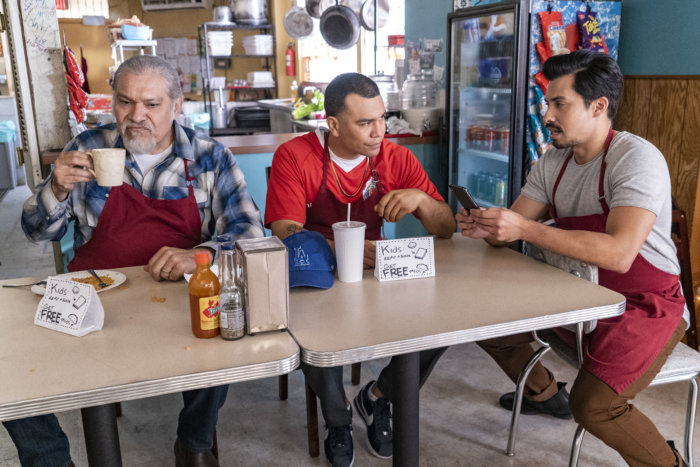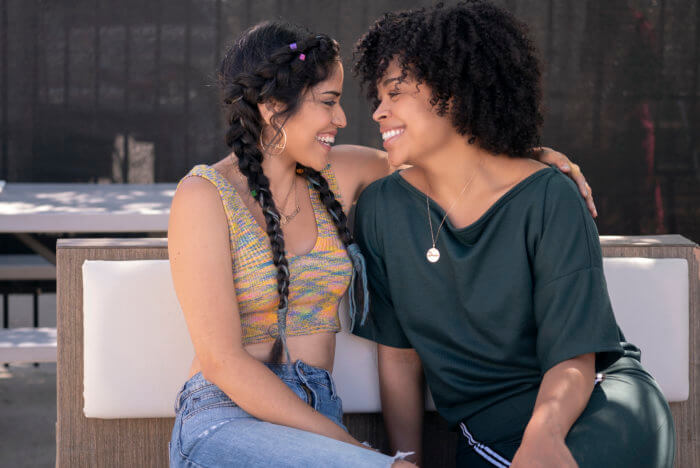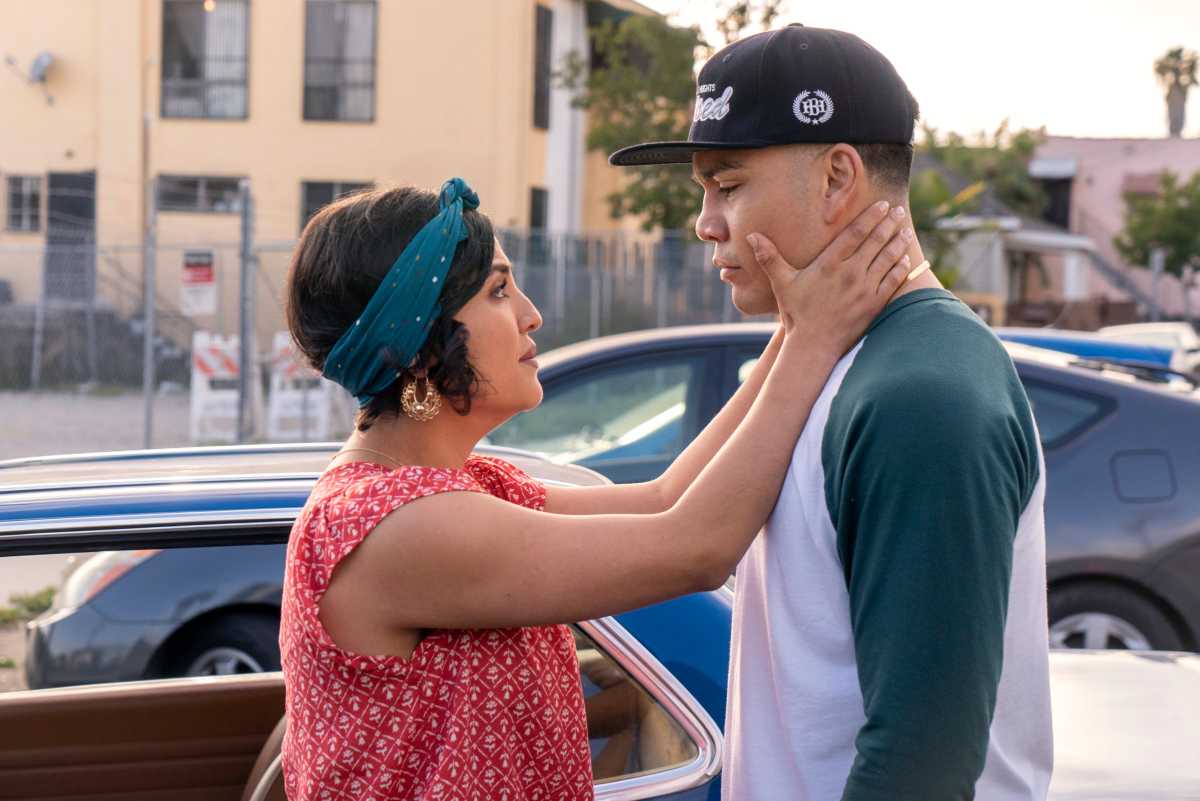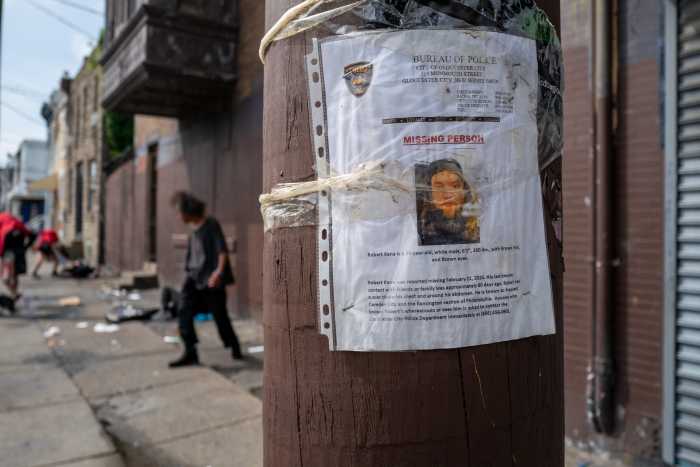It’s been a crazy four years for Marvin Lemus and Linda Yvette Chávez.
The writers and co-creators originally developed a digital series, “Gentefied” mirroring the culture and the continious conflict with gentrification in Latin communities, specifically with where they grew up in Boyle Heights, Los Angeles. Once the trailer dropped however, everything changed. The digital series with EP America Ferrera on board was quickly on the fast track to becoming a TV series, and Lemus and Chávez had to figure out a way to bring “a hybrid” of the digital series to life on screen with a new storyline and new dynamics. The result of their brainstorming is the 10-episode new bilingual Netflix series of the same name, and this comedy-drama is not just entertaining, it’s meaningful.
For both showrunners, this is a piece of themselves and their families—it’s a love letter to their communites. “Gentefied” does showcase certain difficulties of life that we all experience, but with a hyper-lens on Latinx culture—something that has not been done quite this way before. Pair that together with the insanely hilarious dynamics of one enthralling family, their suffering taco shop, and the ties with their community and you have your new favorite binge-worthy series. The biggest difference with this show is that we may all learn something purposeful about the way we view people, different cultures and how to be a good neighbor wherever you live.
What was the process like when developing the series for TV? Did the story have to change at all?
ML: There were a lot of changes and a lot of similarities. The digital series itself was an anthology. Every episode featured a different character, so it was almost even like seven different short films and there was a loop or common thread throughout. To develop it to half-hour, when Linda and I sat down, we thought about shows that we really like to watch. We don’t really watch a lot of anthologies, what we love are shows where there is a strong narrative drive where we want to binge it and we want to know what happens next. So we were thinking okay, how do we have our cake and eat it too? We found a hybrid for the half-hour version where we took three of the main characters from the digital series and we made them all cousins (Eric, Chris and Anna), and we added the Grandfather and we made it all about this taco shop really centering the story about this one business and their family. That core struggle is our main narrative drive, but we also have a few episodes throughout that jump between different points of view with the cousins and a few secondary characters. We wanted to do that so we could maintain this sense of a community that we were able to build in the digital series, especially for the issues that we are exploring about gentrification, class, race and identity—we wanted to be able to jump and explore different points of view with these characters and from different angles. I think we’ve accomplished that.

The series does explore very deep subjects, but there are also moments where you can’t help but laugh out loud. What does that balance of comedy and drama bring to the art of storytelling for this series?
LC: We both have comedy backgrounds, but we also talk about how the funniest people we know in our lives are our families. They are hilarious. Our Latino families will talk sh*t and tell jokes, and a lot of times that humor comes up in very difficult and uncomfortable situations. It’s a coping mechanism to be able to use comedy to work through these certain traumas. I think the reason why we love comedy and why we use it is because it is a powerful tool and it gives agency, it puts the narrative back in our own hands—no one’s laughing at us, they are laughing with us. I think for us as Latinos and Latinx, in our communities often creators who make shows are telling these stories and they are not brown people like us—they don’t have that experience so it feels like we are being made fun of or being treated in a light that’s just not positive. When we take the reins and say, no we own this narrative, and we use comedy to do that, it’s just a whole different thing. This is life, life is hard and it’s funny, and this is how we all function, not only Latinos but all of us. It was so vital to us, it was hard for us to capture but it was also so important for us because that was really the tone that we have grown up with and we know so well.
ML: The only thing I’ll add to that is that when we think about the older, immigrant characters, when we see that on TV, like Linda said they are almost the butt of the joke. They have this accent and their English isn’t very good and they come off being not very smart. Our parents, our grandparents, our uncles—they are our heroes. They are so smart and so witty and so wise. We just never get to see that part of them [on TV], so we really wanted to flesh out and have this image of our heroes, the people who have taught us how to be resilient and how to be strong and how to move through these phases with our head held up high. That was something that we really wanted to present, to break the stereotypes with this one show.
Where did the title “Gentefied” come from and what does it mean to you?
ML: The term was coined in Boyle Heights and it was used to describe the people of the neighborhood in a sense where they were trying to gentrify their own neighborhood and come in with these businesses that keep the culture of the neighborhood alive and not erase it like what outside businesses tend to do. Some people think that still leads to displacement and it’s still not a solution, so there is conflict around that. That’s where the title comes from. That conflict and that argument for us was this kind of microscopic way of looking at our bigger issues that I think a lot of children of immigrants face living between two worlds, being in this country trying to learn how to be American and also trying to hold onto our parent’s culture and where they come from and keep that alive and how that all conflicts. We’re not necessarily going into this trying to assume any answers or present any solutions, but we wanted to explore all the different points of view. Everyone is trying to figure out how to keep the culture of the neighborhood alive through change and to see if that’s even possible.

How does it feel to see this very personal project go through these changes and come to life as a series on Netflix?
ML: It’s been a wild, wild four years with this project—all of our dreams are coming true. There is this responsibility of telling the story very seriously. We’re trying to make sure the show and everything positioned around it is going to do right by the community. But I think at the core of it, our dreams are coming true. We’re artists, we’re storytellers and I’ve dreamt about being a director and a filmmaker since I was 8 years old. My mother wanted that for me my whole life, so there is a lot of pride. It’s beautiful and it’s amazing to be here and have the privilege to do this and have these bilingual stories about our community. It’s authentic to our families and ourselves in a way that we haven’t ever seen before.
LC: Just for folks to see this—we had a screening in LA last night with a bunch of students who were Latinos in the community, and the reactions to the episodes probably meant more to me than a review in the “New York Times.” Just hearing the response back on this show, which we had worked so hard on to bring to the screen, it made me feel like wow, this is impactful for people. That’s what we really hope people take away, is that anything is possible and we can tell our own stories and we can find that power to do it.
‘Gentefied’ drops on Netflix Feb. 21.



























